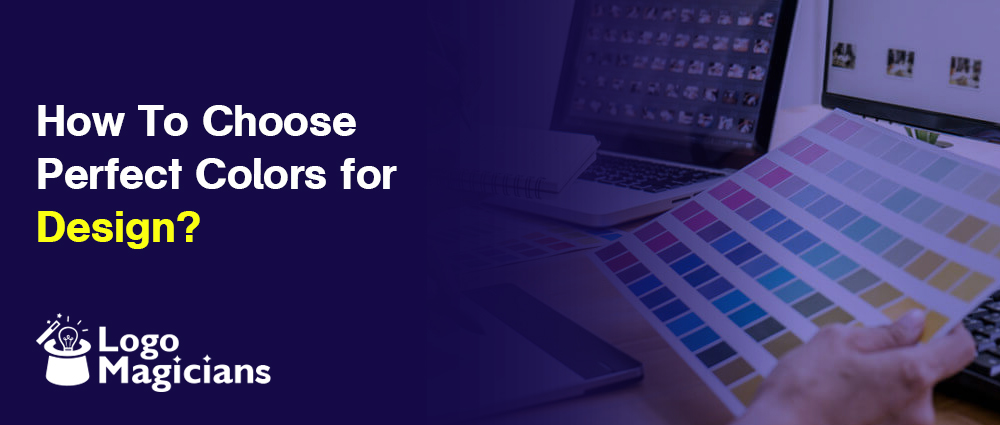Get Upto 60% Discount
Grab 50% Discount
for all custom logos
Please fill the form below & proceed
PMS Color: How To Choose Perfect Colors For Design?

July 17 , 2020 Posted by admin
When we start with our corporate logo design, or basically any such design, we need it to have colors which can be accurately replicated both digitally as well as in physical print, because an affordable logo design is one which has been designed once using easily replicable colors. But the common color systems used digitally such as HTML and hex colors cannot be recreated properly for printing, as the process for both is very different. RGB and hex systems work by adding light to a dark screen, while in physical printing, we subtract the light reflected off of the white surface, such as a paper or any other material. Since we would need designs such as logos and company mast heads to be usable both digitally and physically, we make them using Pantone or the CMYK color schemes.
Why Are They Important?

The main advantage of using Pantone colors is that it provides consistency in shades across a whole host of mediums. It allows designers to easily match colors when they start the printing process, regardless of the type of equipment being used to perform the printing.
The system works with the help of the Pantone guide that is released by the Pantone company, which contains color swatches that have the specific PMS number on each, which is useful when identifying the color for the next time.
These swatches also come in handy when a buyer is after a specific color as well. But there are a few things to keep in mind when using a Pantone guide:
- The material which will be used to print the design, in the case of physical printing. The guides are separated according to the material they are specified for.
- The age of that specific Pantone guide. As the books get older, the color might fade, which might result in you selecting the wrong shade of the color. Another reason to check the age is that the company releases updates from time to time, which could include newer shades that might be more to your liking.
How do you choose the right pantone color?

When you find a Pantone color swatch which you like, that shade is known as a spot color. Now what spot colors actually are is that they are pre-mixed colors which are supplied to the printer in addition to the CMYK colors, and depending on the number of pigments in there, it can go all the way up to eight-color printing.
Now getting to the actual process of selecting the Pantone, each Pantone swatch has three color values on it; the RGB value, the hex code and the CMYK value, so that the designer can easily replicate the color across both the digital and physical mediums. This allows for closer color matching across, different printing processes, or when viewed digitally via different screens. But another use of these values is when you need to find a matching color swatch by reverse searching using the RGB or hex value that you like, such as converting hex to pms color, or RGB to pms color. But beware of the medium for printing you will need, as that might change the color.
The main reason we consider the medium for printing is because of how the color interacts with the material in terms of vibrancy. There are two main types of materials for printing, either coated or uncoated. Uncoated, or plain material will absorb some of the pigment, so that the resulting color looks a little less vibrant, and has a matte finish. Coated materials on the other hand, is coated with an impervious layer, which allows the pigment to resist absorption, thus giving more vibrant colors and a shiny look. Therefore, we consider the specific Pantone color palette designed for that type of medium.
This difference in vibrancy is more visible in darker colors, as they have a higher concentration of pigments inside them, and therefore have a higher chance of changing shade if not perfectly calibrated.
Using the Pantone Color in your design

Let’s see how we use Pantone color matching for our project when we hire a custom logo design company.
First we choose a primary color from the Pantone color book, choosing from coated or non-coated as per your need. Besides the primary color, we will also choose the secondary colors, and note down the codes for all of the colors we have selected.
After we design a logo, then we will pass it by the client, and if agrees to it, we send it ahead to printing, with the codes of the primary and secondary colors sent to the printer alongside respective color chips. Color chips are just perforated pieces of paper which denote each separate solid color from the Pantone collection.
The printer will then use the same guide as the designer so that he can write the exact values of the colors on the printing tickets. These tickets then go the press, where the press operator will mix the pigments as per the requirements.
The resultant mixed ink will be used by the printer to print the designed logo on the provided print medium, as per need. The entire process, everyone responsible from the designer, the printer and the client, everyone can check the consistency of the colors reproduced to provide uniformity.
Conclusion
To conclude, PMS or Pantone Matching System allows us to provide uniformity in colors of our designs across an array of mediums so that the brand is reflected to have impeccable attention to detail.

Leave a Reply